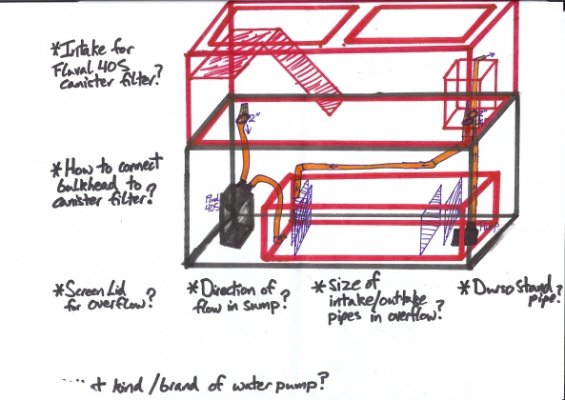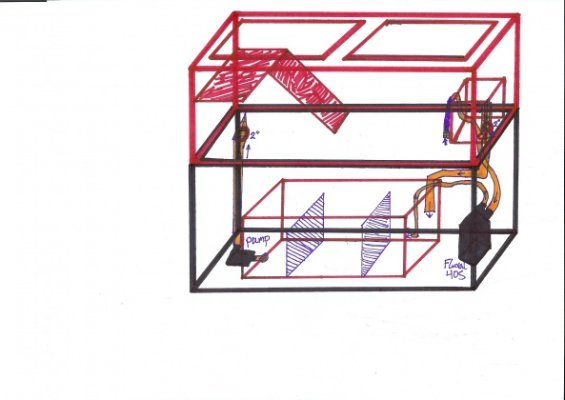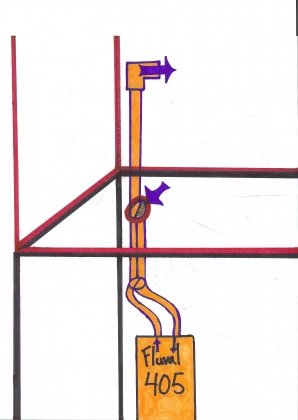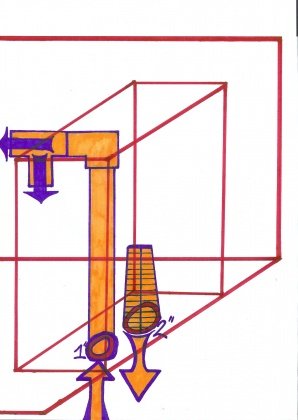 · In case of power outage, would these setups lead to flood?
· What type of plumbing, rigid or flexible?
· Water pump, submersed or external, what brand?
· In case of power outage, would these setups lead to flood?
· What type of plumbing, rigid or flexible?
· Water pump, submersed or external, what brand?
I can give you some thoughts on these subjects.
First off, yes power outage will be a problem with the methods you are proposing. There are probably as many ways to do this as fishkeepers, but the one I describe does not depend upon mechanical or powered devices to prevent flooding. Consider;
Gravity drain from inside the overflow to the sump. A return pump from the sump to above the water level in the upper tank. This must either have an air gap above the water or a hole well above the water line to avoid a siphon.
The water levels are set with the pump off. The upper tank levels to the height of the overflow, the sump should be set with a small amount of head room.
When the main pump is started water rises above the overflow by the height required to meet the flow rate (probably less then an inch). The sump level will fall by the volume added to the upper tank plus what is required to fill the return hose from the pump to the tank.
When the power goes off, levels return to the original condition. On my setup I added a manual ball valve on the gravity drain of the overflow so I could isolate the tank if need for maintenance.
Hard pipe or hose, one is not better then the other depending the quality of the hose or pipe. Hose can certainly be easier to work with, just make sure the connections are well clamped.
Depending upon your fish, five turns or more an hour is often recommended for reef or fish. Not so sure about turtles or mixed use. So size the pump at tank volume plus sump volume times five (or so) at the head (height) between the bottom of the sump and the height of the outflow back into tank. This is important because a lot of pumps don't like that much lift and will produce much less flow when facing the pressure of a few feet of head. I don't think you will find this kind of power in a submersed pump but its been many year since I look for one this size.
Your canister must draw water from and return it to the same source, either the sump or the tank. If you set it up with flow from one to the other, you will be creating a potential siphon again.
Give this and your current diagrams some thought.
Best of luck.









